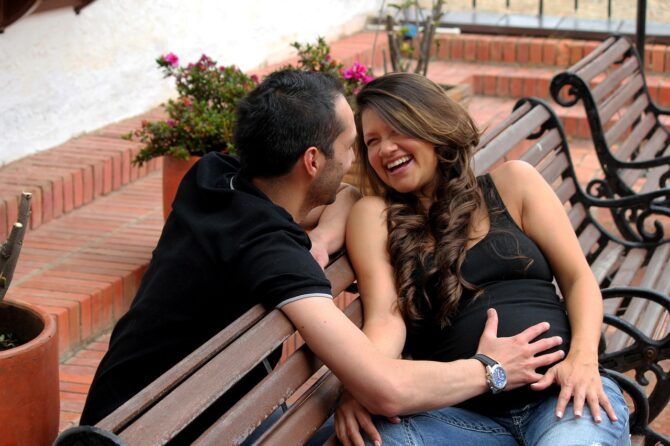Breeding dogs can be a joyous occasion whether you intended for your dog to get pregnant or not. There are many telltale signs and symptoms that let you know your dog is expecting, and it’s important to know what to expect throughout the pregnancy, so you can properly take care of your dog and her litter.
There are four stages to the heat, or estrus, cycle which determines when your dog can be impregnated:
1. Proestrus – This is the first stage of the cycle and lasts for about 9 days. During this time, your dog’s body is preparing for ovulation.
2. Estrus – This is the second stage of the cycle and lasts for about 9 days. This is when your dog is most fertile and can be impregnated.
3. Diestrus – This is the third stage of the cycle and lasts for about 60 days. This is when your dog is no longer fertile and cannot be impregnated.
4. Anestrus – This is the fourth and final stage of the cycle and lasts for about 100 days. This is when your dog’s body is resting and preparing for the next heat cycle.
On average, female dogs go into heat twice a year. The first one usually happens when they’re between 6 and 12 months old, but for smaller breeds, it can be as early as 5 months old. For larger breeds, they may not experience their first heat cycle until they’re 11 months or even older.
The estrus cycle, or heat cycle, differs in length for different dog breeds and sometimes even for dogs of the same breed. Pregnancy during the first heat cycle is not recommended since a 6-month-old dog is still considered a puppy herself.
It’s generally recommended that you spay your dog before her first heat cycle to avoid accidental pregnancy and eliminate the risk of disease later in life. You can have her spayed while she’s in heat, but this could lead to complications.
If you notice the signs of pregnancy and your vet confirms it, here’s what you can expect:
The gestation period (pregnancy) for a dog lasts an average of 58-68 days.
During pregnancy, your dog won’t require special treatment, but you should schedule regular check-ups with your vet to ensure her overall health.
It’s a good idea to have your vet check her a week before her due date so that any potential problems during whelping (the act of labor) can be anticipated.
Whelping, or the process of giving birth to puppies, occurs in two stages. Stage I usually lasts 6-12 hours. The dog will have contractions, but you may not see them. You may notice your dog is restless and panting during this time. During stage II, the fetuses begin to move through the birth canal. Your dog will be obviously straining at this point.
If you’re pregnant, you’ll need to take some extra care of yourself to make sure everything goes smoothly during the delivery. Here are a few things to keep in mind:
Your dog’s nutritional needs won’t change until the last 5 weeks, but when they do, they’ll nearly double. Try feeding her the increased food in several small portions instead of all at once.
She will require more water than usual, so keep an eye on her water bowl and make sure it’s always full.
Avoid strenuous exercise. Short walks and gentle play are perfect for keeping her active without overdoing it.
There are times when dogs may need a veterinarian’s help to deliver their puppies. Causes of this condition, called dystocia, or abnormal birth, include:
-The shape and size of the birth canal
-Uterine inertia (when the uterus can’t contract and push the babies through the canal)
-The puppies being too large
-The puppies being in a position that makes it difficult for them to smoothly pass through the birth canal.
If you think your dog is experiencing dystocia, please contact your veterinarian immediately.
If any of the following occur, you should contact your veterinarian for intervention:
-Your dog’s pregnancy surpasses the 70-day mark.
-She’s been stuck in stage I labor for a full day.
-Strong contractions have been present for over an hour with no pup birth.
-You notice an incredibly foul smelling vaginal discharge.
-She begins vomiting more than usual/to the point of excessive. If everything goes smoothly, your dog will deliver from the comfort of your home. Here’s what you need to do:
The whelping box should be low-sided and open-topped, so the mother dog can lie down in it and prevent accidentally squishing her puppies. The box should be small enough that the puppies can’t crawl out, with sides 6-8 inches tall.
Line the floor of the box with plastic, then paper, then a flannel layer. Tack the flannel layer to the sides of the box so that if the mother dog paws at it, the puppies won’t get smothered.











